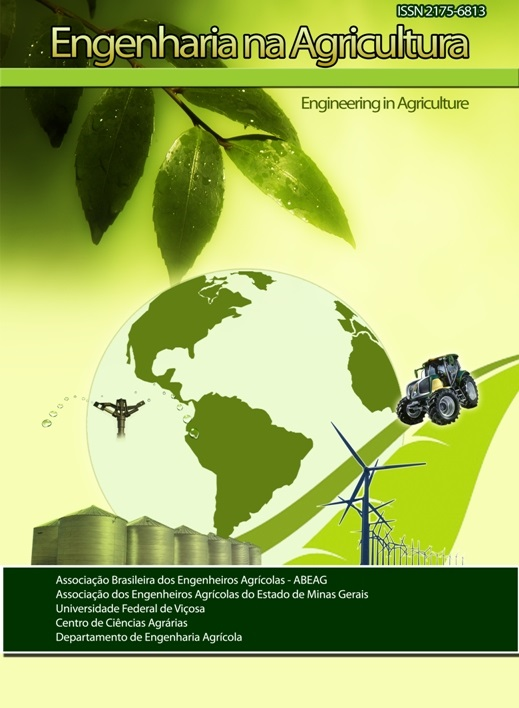Application of the construction waste as a reducing agent in the solubility of iron tailing metals
DOI:
https://doi.org/10.13083/reveng.v29i1.8733Keywords:
acidity, construction waste, mining, solubilityAbstract
Iron ore tailings has acid pH and high content of metals, such as iron, aluminum and manganese. Regarding the environment, these metals poses a risk of contaminating the soil and underground water. Yet, construction residues usually have high pH and because of this, they can be used to neutralize soil acidity and to reduce metal availability in mining tailing piles. The objective of this study was to evaluate the aplicabilith of CW to promote neutralization of the acidity in iron ore tailings aiming at decreasing the solubility and mobilith of metal found in them. Thus, a sample of construction waste was collected and characterized which was later incorporated at different doses into a sample of iron mining tailing collected in the Iron Quadrangle (Minas Gerais – Brazil). The construction waste raised the pH of the tailing sample from 5.58 to 8.22. Moreover, the incorporation of the waste incorporation decreased the manganese solubility in at least 80%. Despite the lack of national legislations and policies on the use of construction waste for this purpose, the results show that it is a promising technological alternative.
Downloads
References
ASSOCIAÇÃO BRASILEIRA DE NORMAS TÉCNICAS – ABNT. NBR 10.004: Resíduos sólidos: Classificação. Rio de Janeiro, 71p. 2004.
_______. NBR 10.006: Procedimento para obtenção de extrato solubilizado de resíduos sólidos: Classificação. Rio de Janeiro, 3p. 2004.
DEPARTAMENTO NACIONAL DE PRODUÇÃO MINERAL – DNPM. Anuário Mineral Brasileiro – Principais Substâncias Metálicas. Brasil, 2017.
EMPRESA BRASILEIRA DE PESQUISA E AGROPECUÁRIA – EMBRAPA. Características de Corretivos Agrícolas. Brasil, 2004.
MATOS, A.T.de.; MATOS, M.P.de. Disposição de águas residuárias no solo e em sistemas alagados construídos. Viçosa: Universidade Federal de Viçosa, 2017.
MATOS, A.T.de. Manual de análise de resíduos sólidos e águas residuárias. Viçosa: Universidade Federal de Viçosa, 2015.
MELO, E.E.C.; NASCIMENTO, C.W.A.; SANTOS, A.C.Q.; SILVA, A.S. Disponibilidade e Fracionamento de Cd, Pb, Cu e Zn em função do pH e tempo de incubação com o solo. Revista Ciência e Agrotecnologia, v.32., n.3. p.776-784, 2008.
MINISTÉRIO DE MINAS E ENERGIA – MME. Boletim do Setor Mineral. Brasil, 2019.
PINTO, T. Metodologia para gestão diferenciada de resíduos sólidos da construção urbana. 1999. 189p. Tese de Doutorado, Escola Politécnica, Universidade São Paulo, São Paulo, 1999.
RAMALHO, A.M; PIRES, A.M.M. Viabilidade do uso Agrícola de Resíduos de Construção Civil e da Indústria Cerâmica: Atributos Químicos. Embrapa, São Paulo, 2009.
SECRETARIA DE DEFESA AGROPECUÁRIA – SDA. Instrução Normativa n° 35, de 4 de julho de 2006: Aprova as normas sobre especificações e garantias, tolerâncias, registro, embalagem e rotulagem dos corretivos de acidez, de alcalinidade e de sodicidade e dos condicionadores de solo, destinados à agricultura, na forma do Anexo a esta Instrução Normativa. Brasil: SDA, 2006.
SECRETARIA NACIONAL DE SANEAMENTO AMBIENTAL – SNSA. Panorama dos Resíduos de Construção e Demolição (RCD) no Brasil. Brasil, 2010.
UNITED STATES GEOLOGICAL SURVEY – USGS. Mineral Comodity Sumaries, 2020. United States of America, 2020.
Downloads
Published
How to Cite
Issue
Section
License
Copyright (c) 2020 REVISTA ENGENHARIA NA AGRICULTURA - REVENG

This work is licensed under a Creative Commons Attribution-NonCommercial 4.0 International License.
Authors who publish with this journal agree to the following terms:
The author(s) authorize(s) the publication of the text in the journal;
The author(s) ensure(s) that the contribution is original and unpublished and that it is not in the process of evaluation by another journal;
The journal is not responsible for the views, ideas and concepts presented in articles, and these are the sole responsibility of the author(s);
The publishers reserve the right to make textual adjustments and adapt texts to meet with publication standards.
From submission, the author is fully conceding the paper's patrimonial rights to the publication, but retaining the owner of its moral rights (authorship and paper's identification) according to Creative Commons Attribution-Noncommercial.








 Licensed by
Licensed by 